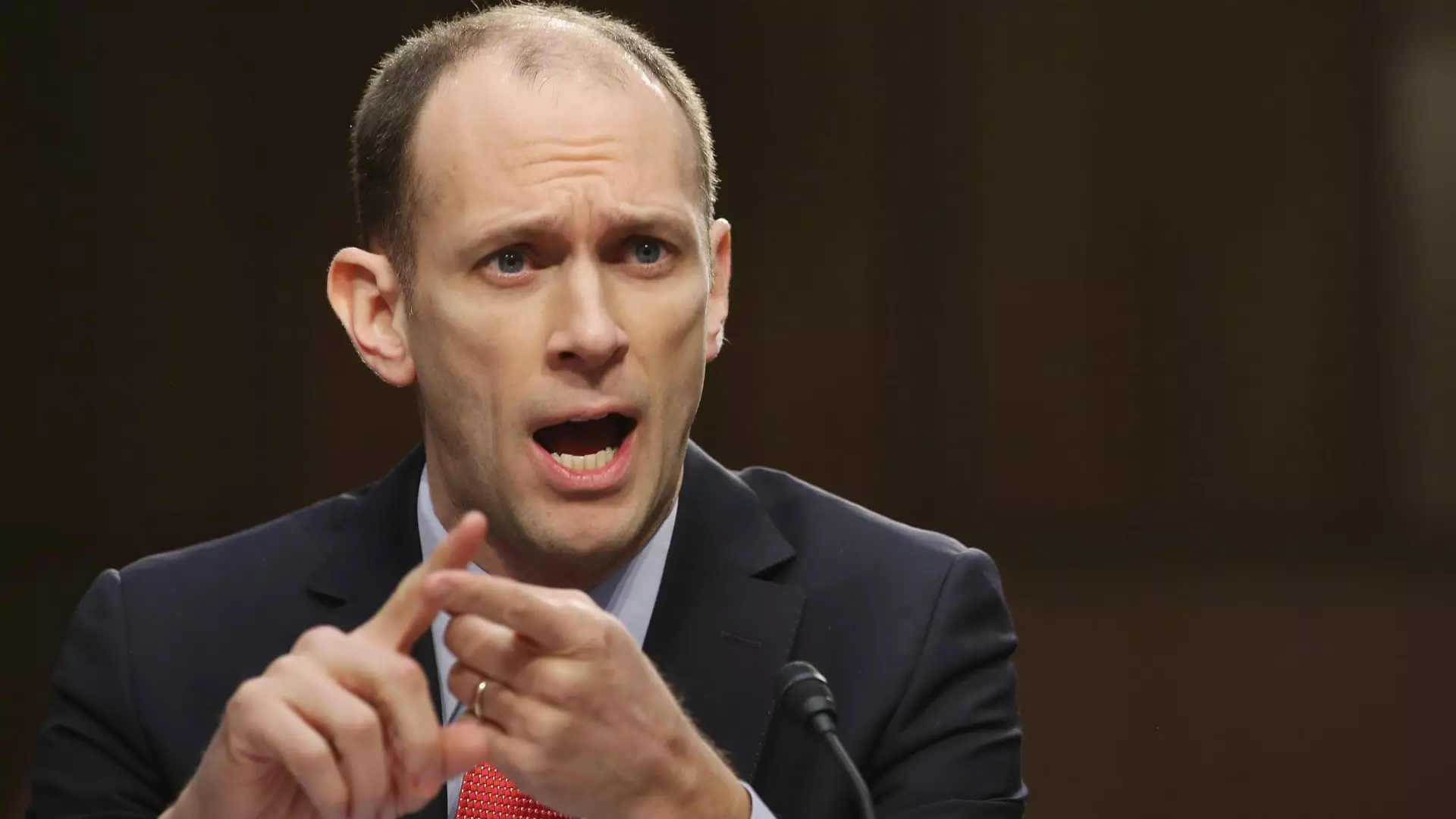In a landscape where economic predictors are becoming eerily fragmented, Chicago Federal Reserve President Austan Goolsbee recently sounded the alarm, indicating that interest rate cuts may still be on the horizon. But why should we treat his predictions with skepticism? While Goolsbee remains cautiously optimistic, the growing concerns about tariffs and their implications for business growth cannot be dismissed. The dialogue among local business leaders indicates an increasing sense of uncertainty, leading to hesitancy around capital investments. The notion that optimism can coexist with impending economic risks casts a shadow over the Fed’s current strategy.
Goolsbee articulated that the conversations he has had with businesses reveal a tangible shift in sentiment over recent weeks. Many are hesitating to initiate capital projects, a leading indicator of economic vitality, as they grapple with the ramifications of fiscal policy uncertainties. This should concern us; a pause in capital expenditure often translates into a stagnation of progress, not just for businesses but for the economy at large. There’s an inherent conflict between the Fed’s mission to foster economic growth through lower rates and the brewing storm of external pressures that could undermine that growth.
The Tariff Conundrum: A Double-Edged Sword
The crux of Goolsbee’s warnings lies in the volatile impact of tariffs. Contrary to what many may argue, tariffs act as a double-edged sword: while intended to protect certain industries, they invariably raise prices for consumers and inflate costs for producers. Goolsbee pointed out that this “stagflationary impulse” is an indicator that can stymie growth even before it has a chance to emerge, countering any initial predictions of prosperity.
Instead of a 1970s-style stagflation that many fear, we are seeing a modern reflection in which low unemployment and rising prices coexist amid economic uncertainty. With the unemployment rate hovering around 4%, the economic metrics suggest a flourishing workforce; yet, rising inflation bubbles beneath the surface, threatening to burst. In choosing to hold interest rates steady while expressing an ambiguous outlook, the Federal Reserve might be missing a chance to proactively navigate the looming economic shadows.
Muddled Economic Signals: An Impediment to Progress
Goolsbee’s insights coincide with recent comments from New York Fed President John Williams, who articulated the disconcerting mixed signals emanating from economic data. This duality—encouraging yet foreboding—complicates decision-making processes for policymakers and businesses alike. The Fed’s own assessment acknowledges increased uncertainty, a term that was emphasized repeatedly by Chair Jerome Powell during a recent news conference. Yet, in an environment filled with ambiguity, it seems both the Federal Reserve and business leaders are caught in a feedback loop of cautious inaction.
The potential for stagflation cannot be overlooked, especially when businesses are forced to reconsider spending amidst worries about rising costs. Future rate cuts could seem counterintuitive if inflation continues its upward trajectory, eroding the purchasing power of consumers and stifling demand. The Federal Open Market Committee may have kept its projections for two rate cuts through 2025, yet market expectations have tipped in favor of more aggressive reductions, suggesting that investors perceive a deeper malaise than the Fed is willing to acknowledge.
The Perils of Complacency
It’s crucial to recognize that complacency is a fertile ground for economic hardship. The idea that, despite recent turmoil, the Fed can simply sit back and allow the chips to fall where they may is not only naive but dangerously shortsighted. The discussions surrounding tariffs and fiscal policy need urgent attention, lest businesses take a further step back into an environment of uncertainty.
As these complex economic threads weave together, it’s ever more important for the Fed to consider a more proactive approach. If the expectation is to see rate cuts in a year or more, policymakers must also contend with immediate challenges that could complicate or even negate those reductions. Without addressing the uncertainties head-on, any potential for economic growth may diminish, leaving not just the Fed’s projections but the entire economy in a precarious position.
Navigating this landscape isn’t merely a matter of keeping an eye on economic indicators; it demands decisive action and holistic understanding. The conversation needs to shift from hopeful predictions to effective strategies that can illuminate a path through the fog of uncertainty.


Leave a Reply